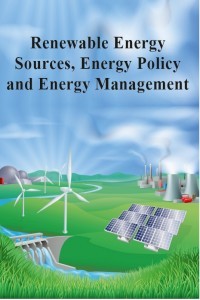Experimental analysis of a flat plate solar collector in Benin City metropolis
Experimental analysis of a flat plate solar collector in Benin City metropolis
Abstract In this study, the heat transfer in a flat-plate solar collector with water tubes was analyzed. The performances of the system both theoretically and experimentally were evaluated and compared. The theoretical results obtained agreed well with the experimental results, except that a slight higher deviation of heat loss was obtained in the experimental analysis and low solar radiation in the morning and evening affects the system. An overall heat loss coefficient of 7.82 W/m2 °C was obtained in the theoretical analysis. The collector efficiency was high around the mid-day when the collector receives the highest energy and the useful heat rate was at its maximum. The results also reveal that the performance of the solar collector depends much on the heat rate. The collector efficiency increases as the heat rate increases at an output temperature of 78oC.
Keywords:
solar collector, set up,
___
- REFERENCE [1] R Kumar and MA Rosen. A critical review of photovoltaic-thermal solar collectors for air heating. Appl. Energ. 2011; 88, 3603-14. [2] M Rommel and W Moock. Collector efficiency factor for absorbers with rectangular fluid ducts. Sol. Energ. 1997; 60, 199-207. [3] KAR Ismail and MM Abogderah. Performance of a heat pipe solar collector. J. Sol. Energ. Eng. 1998; 120, 51-9. [4] JA Duffie and WA Beckman. Solar Engineering of Thermal Processes. 2nd ed.John Wiley and Sons, New York, 1991. [5] J Facao and AC Oliveira. Analysis of a flat plate heat pipe solar collector. In: Proceedings of International Conference on Sustainable Energy Technologies, Nottingham, UK. 2004, p. 1-5.
- ISSN: 2717-9583
- Başlangıç: 2020
- Yayıncı: Hasan AYDOĞAN
